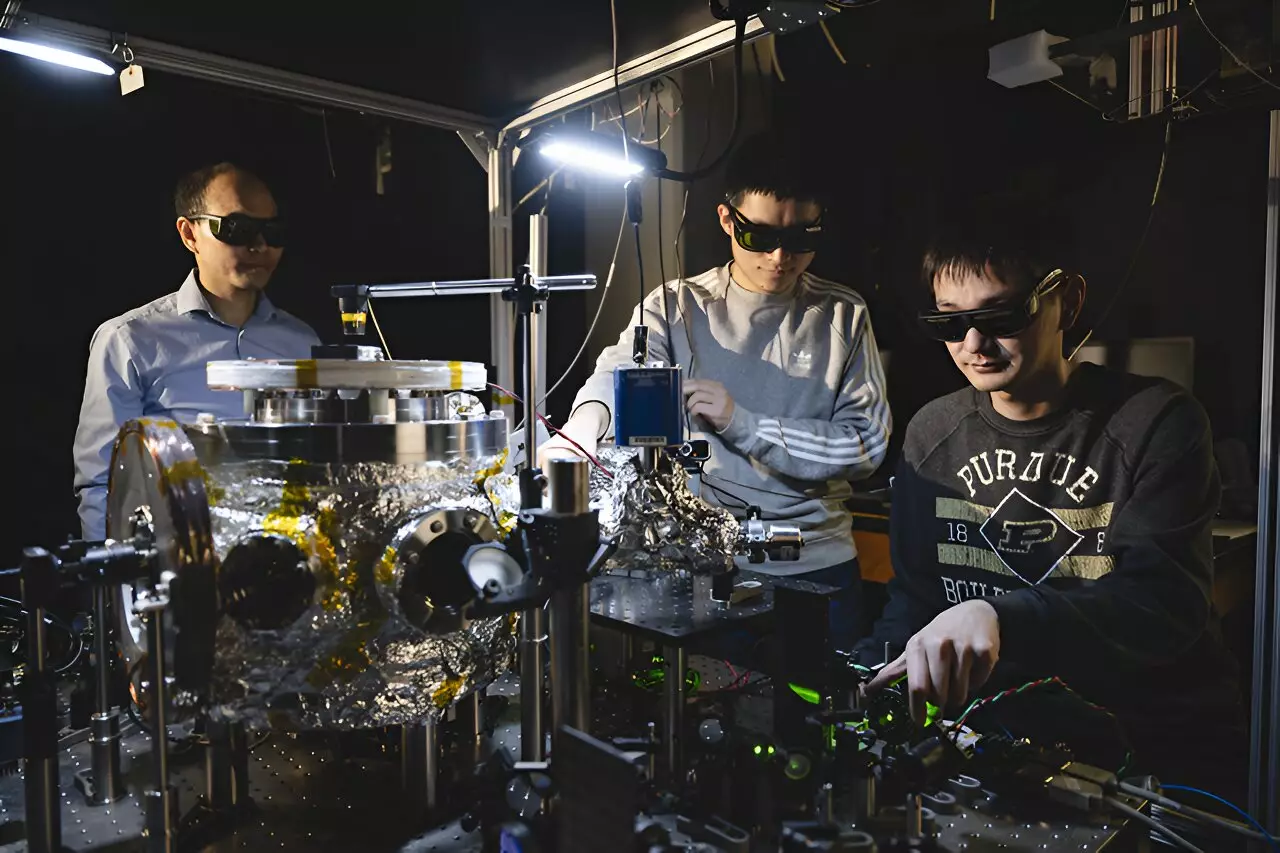In a remarkable blend of art and science, physicists at Purdue University have orchestrated a groundbreaking experiment that they playfully describe as the “world’s smallest disco party.” At the heart of this innovative demonstration lies a fluorescent nanodiamond that has been meticulously levitated and manipulated, rotating at astonishing speeds. As this tiny diamond spins, it scatters a kaleidoscope of colors—reflecting a synergy between quantum mechanics and avant-garde experimentation. The vivid interplay of light and rotation paves the way for deeper inquiries into the nature of quantum systems and their behavior under rapid movement.
Under the leadership of Professor Tongcang Li—a notable figure in the realms of Physics, Astronomy, and Electrical and Computer Engineering—this research is not just a whimsical showcase but a significant step forward in understanding the complexities of quantum mechanics. Recently published in *Nature Communications*, this work has caught the eye of reviewers who see it as a pivotal moment in the study of rotating quantum systems and levitodynamics.
The Dance of Spin Qubits
Central to the Purdue experiment is the concept of spin qubits embedded within the levitating nanodiamonds. Qubits, the fundamental units of quantum information, hold potential for unprecedented precision in measurements and quantum computations. Professor Li elaborates on their necessity: “Imagine tiny diamonds floating in a vacuum, containing spin qubits that can aid in unraveling the perplexing ties between quantum physics and gravitational forces.” Past experiments faced daunting challenges in retaining the delicate balance required to keep these diamonds floating while simultaneously measuring their quantum states.
Utilizing a sophisticated ion trap, the Purdue team has successfully overcome these barriers, allowing for the observation and control of spin qubits in high-vacuum conditions for the first time. This achievement marks a significant leap in levitated optomechanics, enabling researchers to explore phenomena that can reshape our understanding of quantum behavior.
The forward-thinking researchers pushed the boundaries by spinning these levitated nanodiamonds at dizzying rates — achieving speeds up to an astonishing 1.2 billion revolutions per minute. This remarkable feat reveals how rotation impacts the behavior of spin qubits in a manner known as the Berry phase, a concept that links geometric phases to quantum states in dynamic systems. The discovery is not only a scientific curiosity; it is a vital puzzle piece in the larger quest to grasp the intricacies of quantum mechanics.
To fabricate these unique nanodiamonds, the team employed a state-of-the-art high-pressure, high-temperature synthesis, interspersed with electron irradiation to create nitrogen-vacancy color centers. Tethered to these diamonds, the color centers are the sources of the electron spin qubits, which come to life under green laser illumination, providing captivating red light that conveys critical information about their spin states. From this intricate setup, researchers glean insights into how manipulation methods can influence the behavior of the diamonds in real-time.
A Study in Collaboration and Innovation
Collaboration played an essential role in this pioneering project, involving contributions from Purdue University’s talented researchers as well as key figures from Sandia National Laboratories and Washington University in St. Louis. The involvement of professionals with diverse expertise ensures that each aspect of the experiment is meticulously optimized, from the design of the integrated surface ion trap to the fine-tuning of its operational parameters. This communal endeavor fosters an environment ripe for innovation and discovery.
As the diamonds twirl, scientists have demonstrated the capability to adjust their spin direction and rotation speed, offering a new dimension to experimental control. By modifying the driving voltage, they can manipulate the angular velocity of the diamonds, producing a captivating visual spectacle akin to a spinning top in mid-air.
The implications of these findings extend far beyond the laboratory. The interface between quantum mechanics and gravity has long eluded scientists, and the ability to study these interactions through levitated nanodiamonds presents a promising avenue for future research. The precision measurements offered by these spinning diamonds could bring scientists closer to resolving contemporary questions regarding the quantization of gravity.
Looking toward practical applications, Li discusses the potential avenues for leveraging levitated micro and nano-scale particles in various industries. Their inherent properties make them ideal candidates for developing enhanced accelerometers and electric field sensors — a prospect that has drawn the interest of entities like the U.S. Air Force Research Laboratory.
In sharing his insights, Professor Li highlights Purdue’s commitment to advancing levitated optomechanics research with state-of-the-art facilities and a robust team of researchers dedicated to pushing the envelope of quantum exploration, ensuring that this pioneering work resonates throughout both scientific and industrial communities for years to come.


Leave a Reply